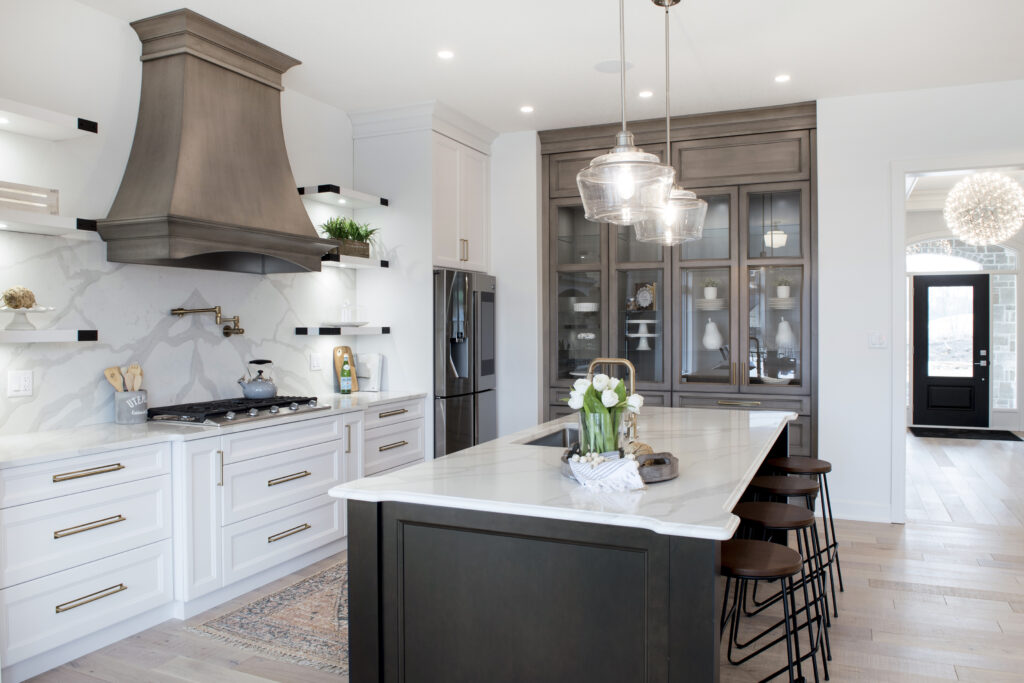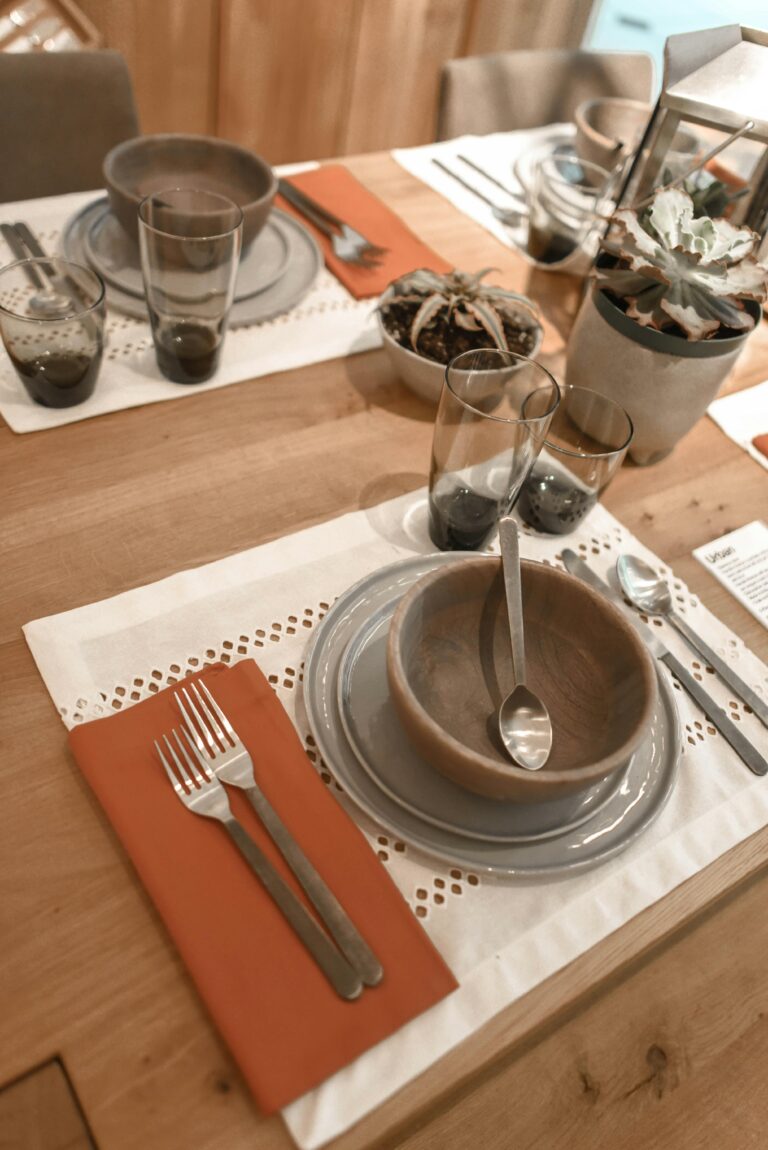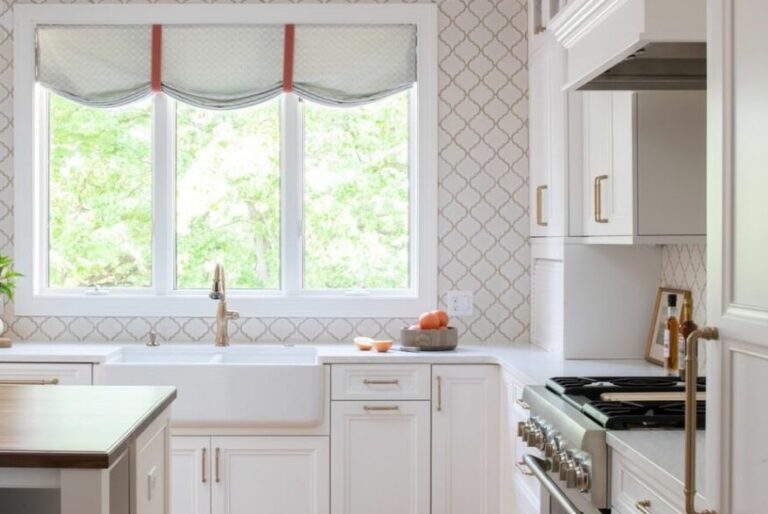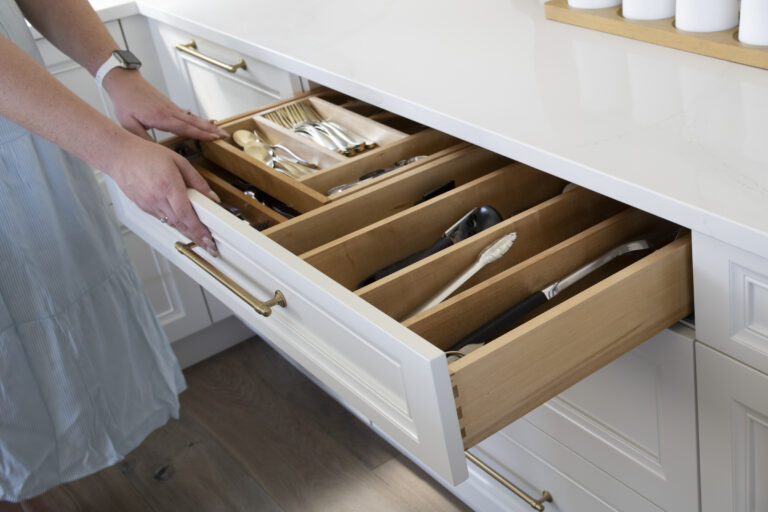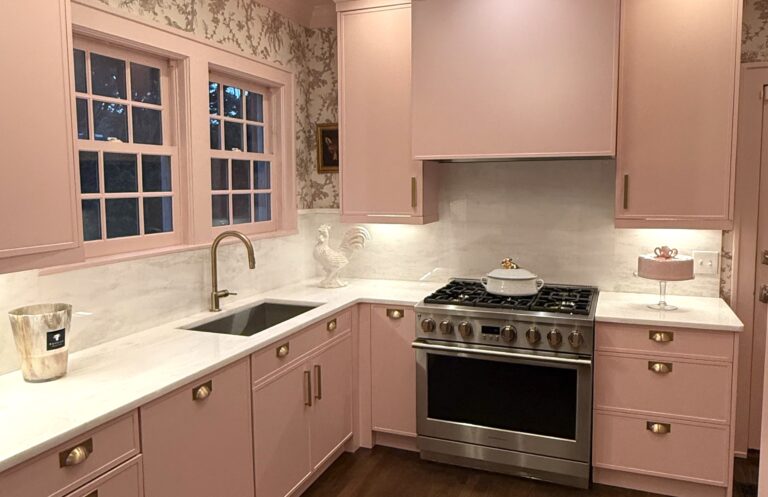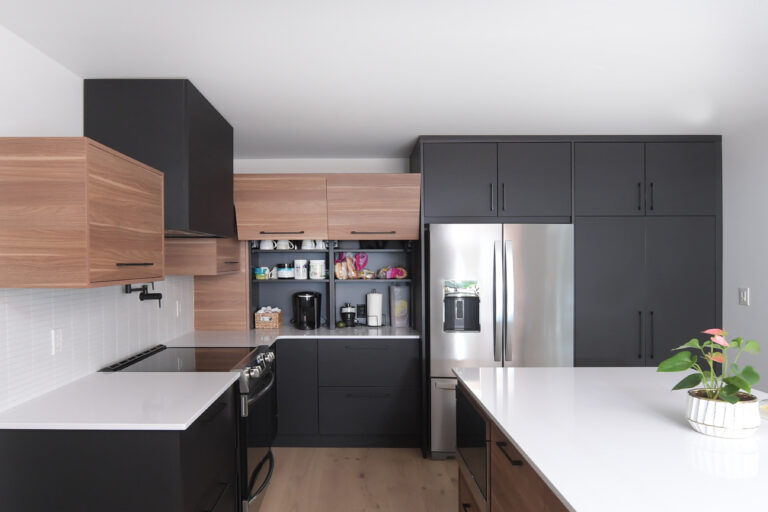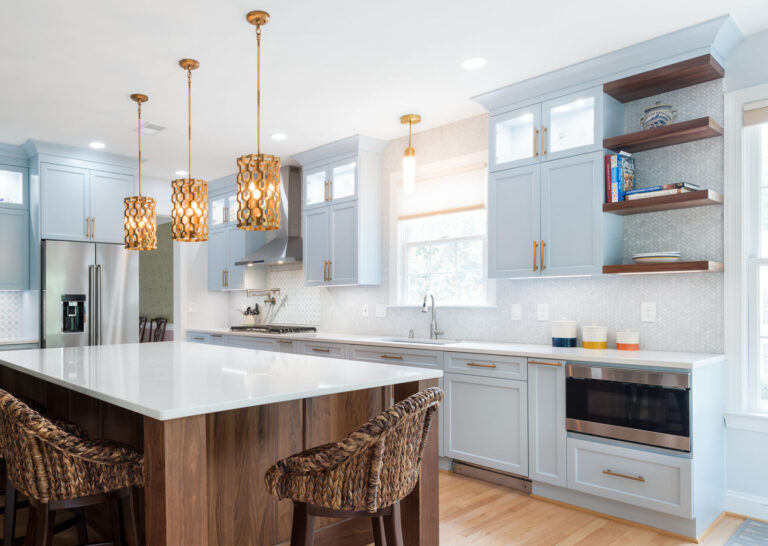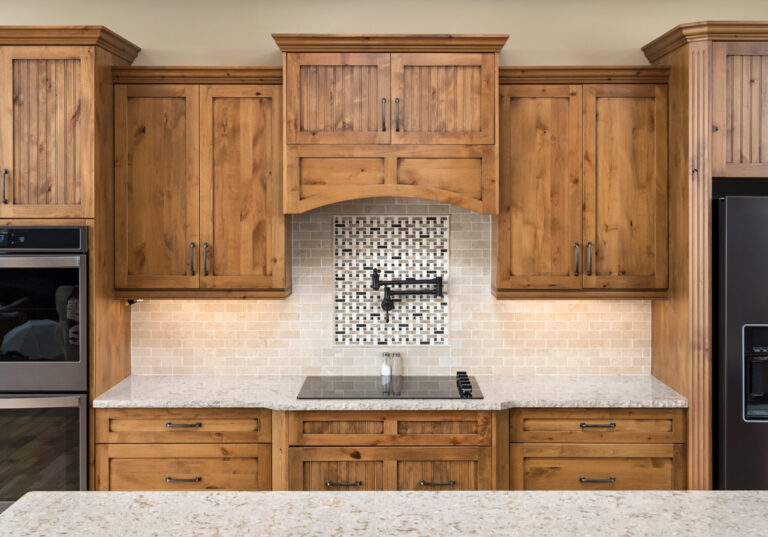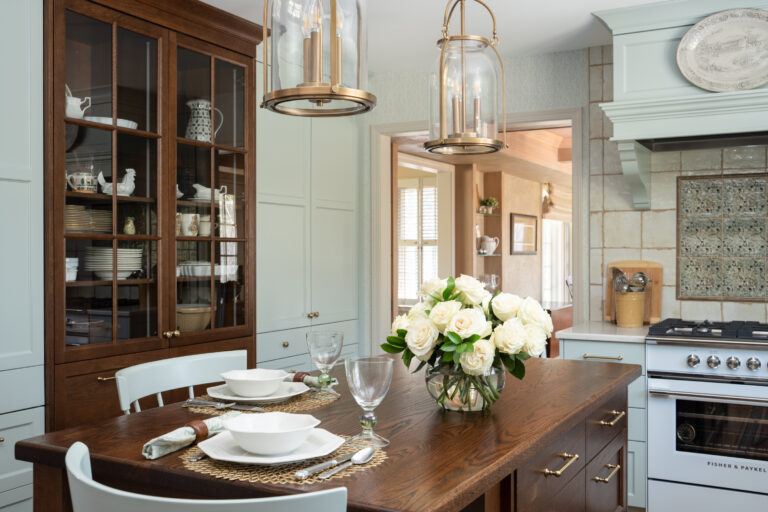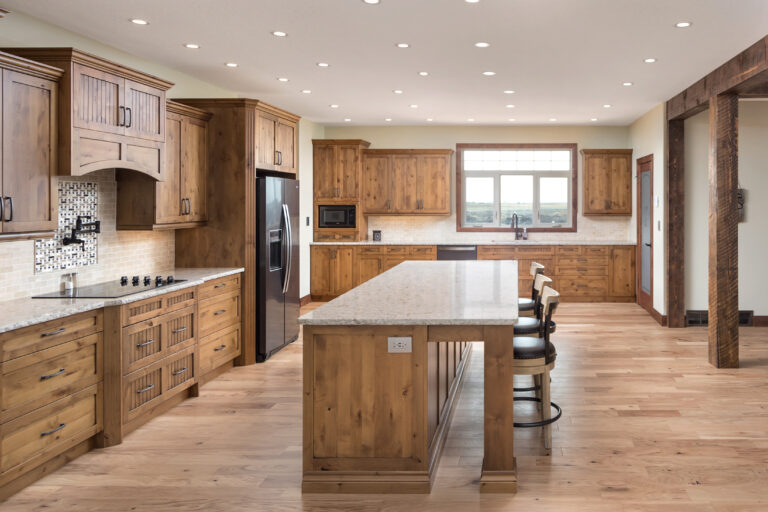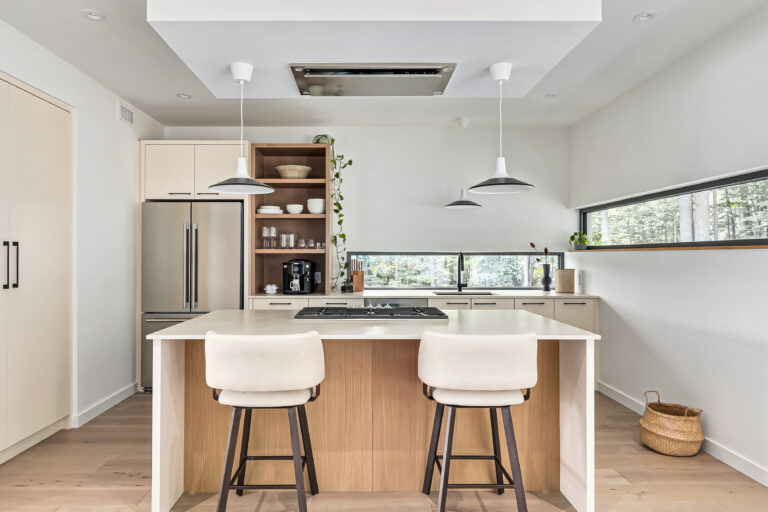For those who appreciate enduring style, the “old money kitchen” aesthetic offers a blend of classic grandeur and today’s comfort. It’s a look that speaks to generations of curated taste, embodying a sense of history, quality, and understated luxury.
Here is some inspiration for designing with an old money aesthetic in mind.
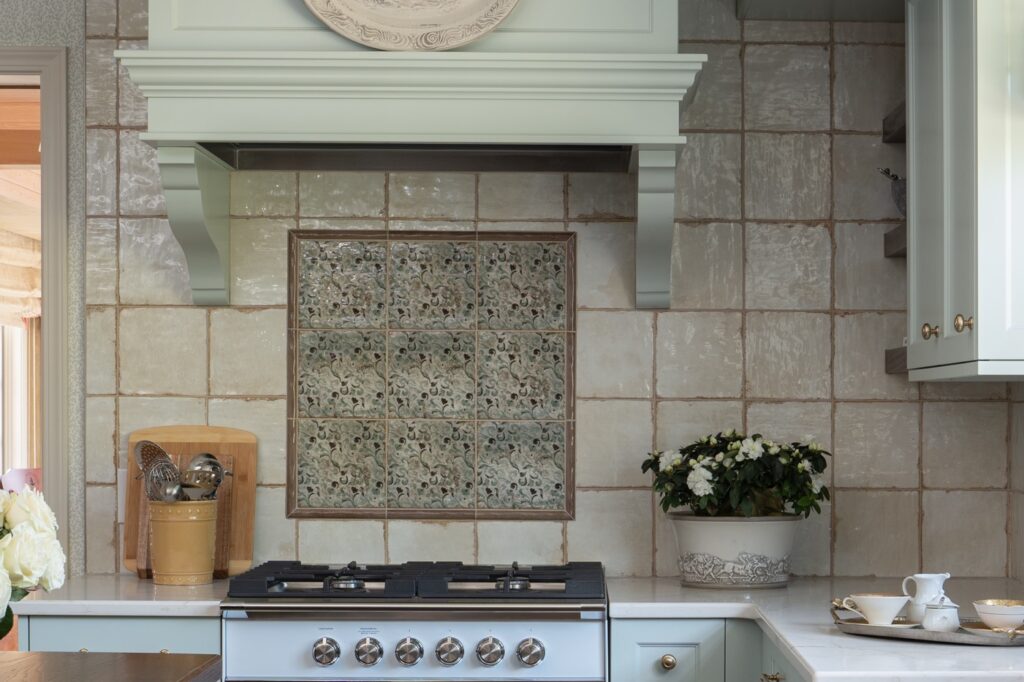
1. Warm, Natural Materials for Quality Luxury
The foundation of any old money aesthetic lies in its commitment to authentic, high-quality materials. Forget synthetic finishes; think rich textures and natural warmth.
Stone: Incorporate elements like marble or limestone countertops for a classic, durable surface that gains character with age.
Warm Wood: Opt for cabinetry, flooring, or even a statement island crafted from rich, warm woods like walnut, cherry, or oak. These materials bring a sense of history and permanence.
Brick Accents: Exposed brick, whether on a wall or as a detail around a range, can introduce a charming, rustic elegance reminiscent of old-world European kitchens.
Leather: While perhaps not a primary kitchen material, consider leather upholstery on bar stools or a banquette for an unexpected touch of luxury and comfort, softening the harder surfaces.
These materials feel substantial and contribute to the kitchen’s overall sense of established quality.
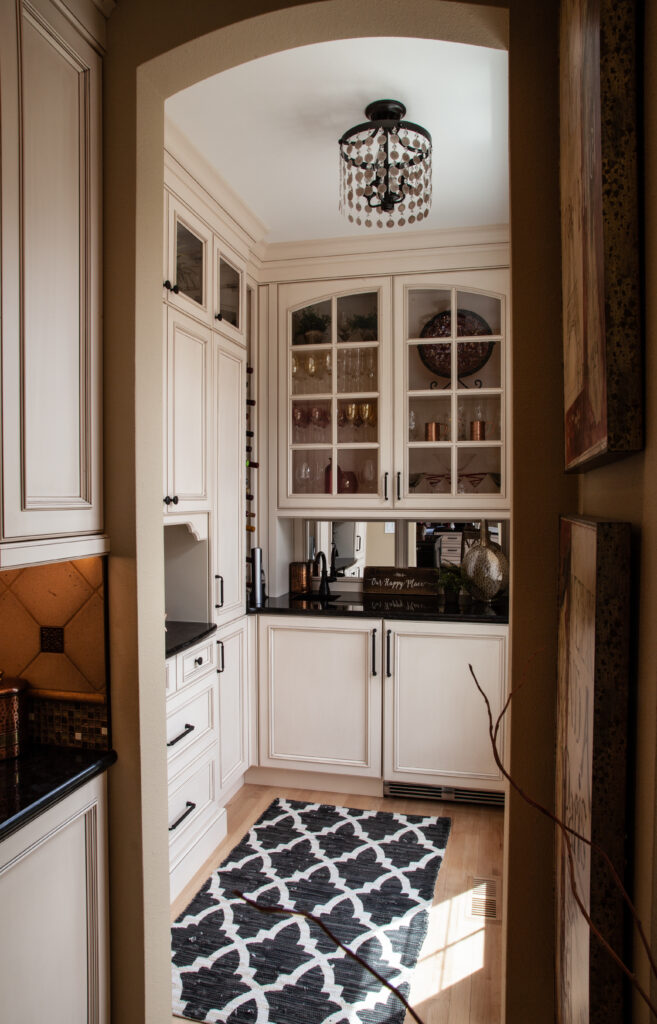
2. Weave in Historical Inspired Features
An old money kitchen has history. These aren’t just decorative details; they suggest a lineage of careful curation and timeless design.
China Cabinets: A grand, built-in china cabinet filled with cherished dinnerware and heirlooms is a hallmark of this style. It’s both functional for storage and a beautiful display piece that speaks to tradition.
Crown Moulding: Don’t underestimate the power of architectural details. Elaborate crown moulding along the ceiling lines adds a layer of sophistication and classical elegance, creating a polished, finished look.
Archways: Instead of standard doorways, consider incorporating graceful archways. They soften transitions between spaces and evoke a sense of stately architecture often found in historic homes.
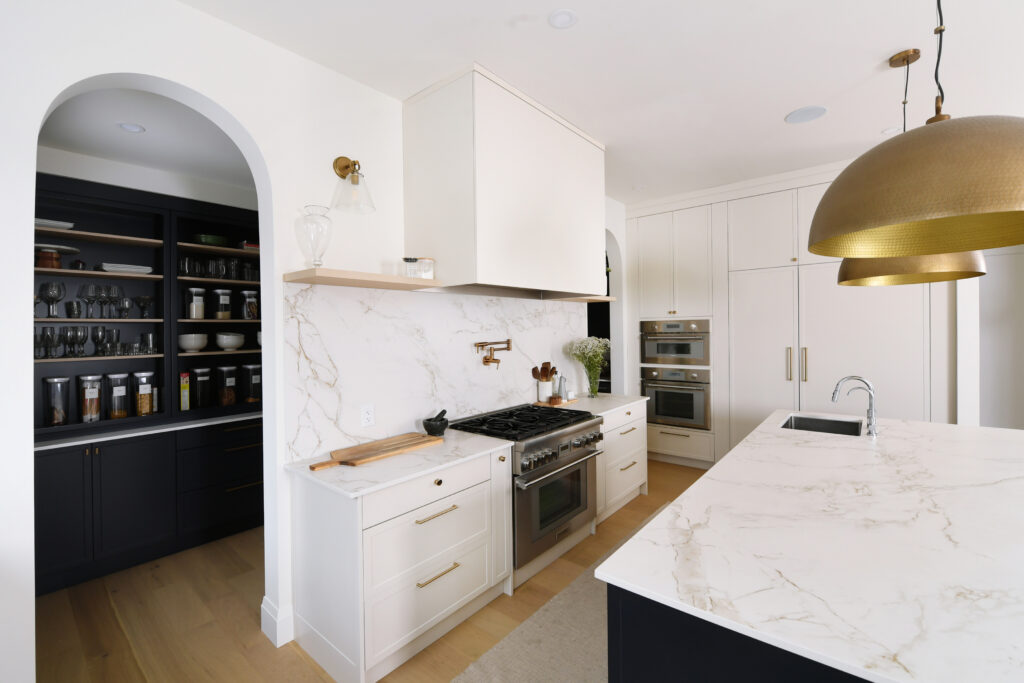
3. Ample Light from Large Windows and Fixtures
Despite its historical leanings, an old money kitchen is never dim or cavernous. It embraces natural light and thoughtfully designed artificial illumination to create a bright, welcoming atmosphere.
Large Windows: Maximizing natural light is key. If possible, incorporate large, well-placed windows that allow sunlight to flood the space, connecting the interior with the surrounding landscape.
Ample Light Fixtures: Beyond natural light, a layered lighting scheme is crucial. Think elegant chandeliers as a central focal point, sophisticated sconces for ambient light, and recessed lighting for practical illumination. Under-cabinet lighting is also essential for task-specific brightness without detracting from the overall aesthetic.
A well-lit kitchen feels expansive, fresh, and inviting, perfectly balancing the richness of the materials.
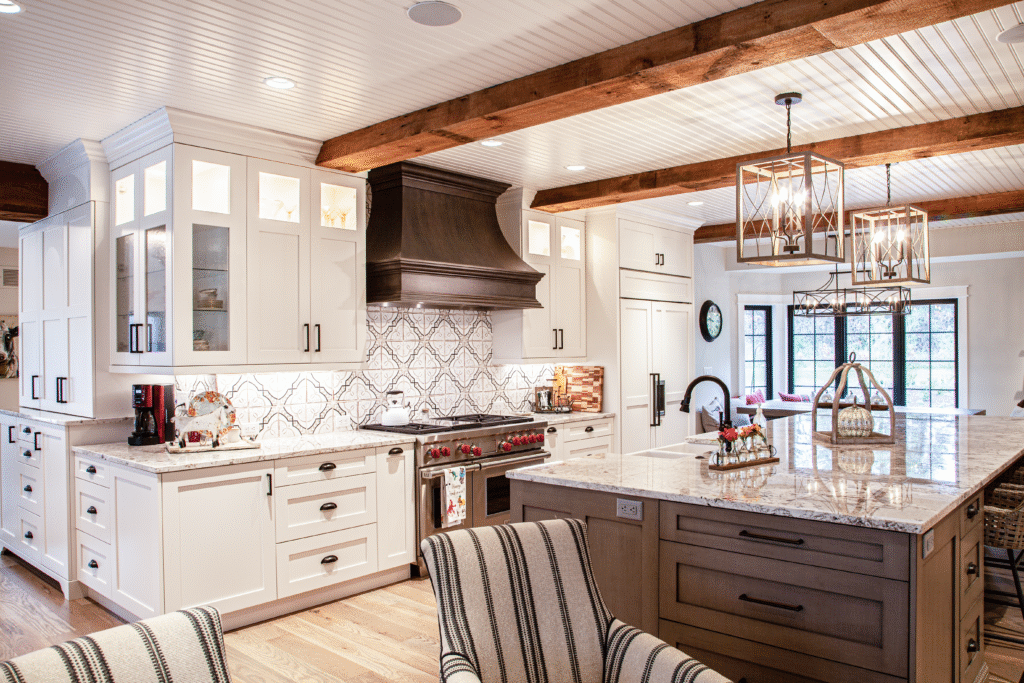
4. Every Surface, Even the Ceiling, is Ornamented
When it comes to an old money kitchen, no surface is overlooked, especially the ceiling. It’s often treated as the fifth wall, offering another canvas for architectural detail and elegance.
Coffered Ceilings: These recessed ceiling panels add depth, texture, and a sense of grandeur. They create a sophisticated framework that instantly elevates the room.
Decorative Plasterwork: Intricate plaster medallions, cornices, or even hand-painted details can transform a plain ceiling into a work of art, harkening back to classical European interiors.
Exposed Beams: If your home has them (or faux if you don’t), beautifully finished exposed wooden beams, in a rich, dark stain, can provide a rustic yet refined ceiling feature that complements the natural material palette.

5. Custom Cabinetry for that Built-In Look
Finally, the secret to the truly bespoke and luxurious feel of an old money kitchen lies in its cabinetry. Seamlessly integrated, meticulously crafted joinery that looks like it’s always been a part of the home.
Integrated Appliances: Rather than freestanding units, appliances are often paneled to match the custom cabinetry, creating a smooth, uninterrupted visual flow. This includes refrigerators, dishwashers, and sometimes even ovens.
Furniture-Style Cabinetry: Think of your cabinets as fine furniture pieces. This means detailed moldings, inset doors, decorative feet, and thoughtful hardware that feels substantial and classic.
Built-in Elements: Beyond typical cabinets, consider built-in banquettes, window seats, or even a small, integrated desk area. These custom additions make the kitchen feel incredibly personalized and functional, reinforcing the idea that every detail was considered for a life well-lived.
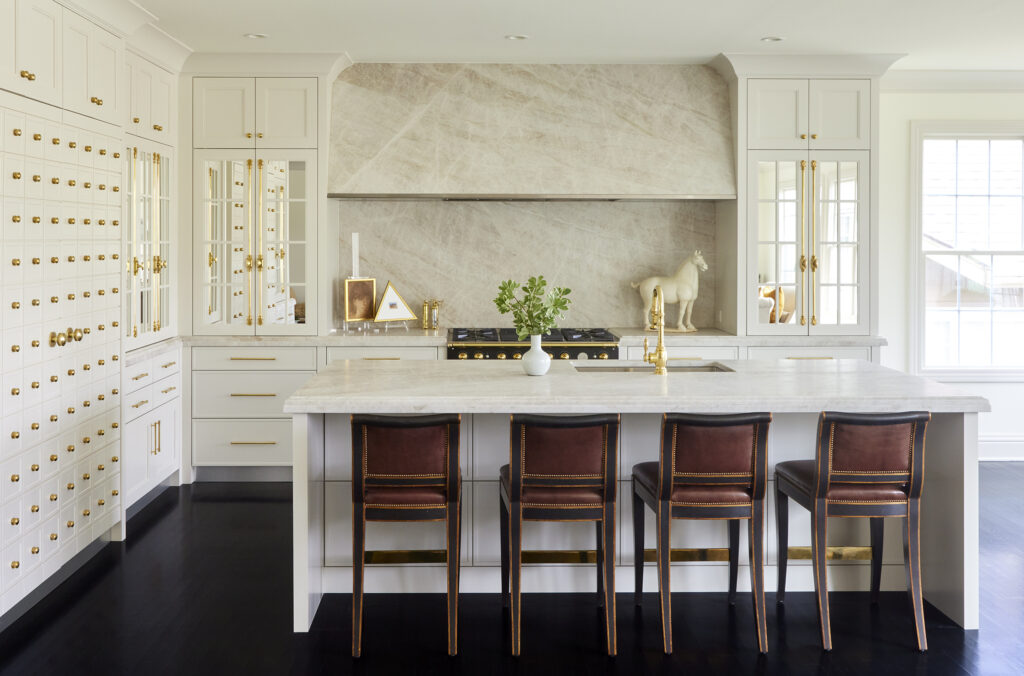
Love the Old Money Kitchen Aesthetic?
An old-money kitchen feels luxurious and welcoming. With quality materials, refined ornamentation, and classic features, it remains timeless by leaning into traditional design over contemporary trends.
If these ideas have you dreaming of a kitchen makeover, grab our free guide and get started planning your renovation.


